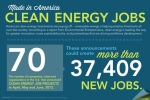
Winners of the 2011 Regional Science Bowl competition (hosted in partnership with the University of Texas - Pan American) pose at the national competition in Washington, DC. | Courtesy of the University of Texas - Pan American HESTEC Program.
EDITOR'S NOTE: This article is cross-posted from Huffington Post Latino Voices.
If we want America to succeed in the 21st century, making sure we offer the nation's students a world-class education is more than a moral obligation, it's an economic imperative.
In the long term, our country faces a stark choice: we can invent and manufacture the clean energy technologies of tomorrow in America for export around the world, or cede global leadership by importing those technologies from China, India, Germany and elsewhere. As Americans, we never back down from a challenge -- and the Energy Department's office of Economic Impact and Diversity knows it is mission-critical to get more minorities involved in Science, Technology, Engineering and Mathematics (STEM) fields.
Ensuring America's competitiveness depends on making sure that Latinos - and Americans of all races - have the education and technical skills they need to advance their careers. This is why the Energy Department is focused on ways we can help encourage more Latinos to get involved in growing STEM fields. As the nation's largest minority group (with more than one in five students enrolled in America's schools), Latinos include more than 11 million students in America's public elementary and secondary schools and more than 22 percent of all pre-K -12 students.
Last year, the Energy Department provided nearly $19 million in support to the nation's Hispanic Serving Institutions in the form of research and development opportunities, scholarships, internships and training. This means more students are getting exposure to STEM fields through hands-on work at our sterling National Labs and in STEM projects at their schools.
Here are a few of the ways the Energy Department is working to increase Latino involvement in STEM fields:
- Science and Technology Workforce Development Program: Developed with the Office of Environmental Management and Florida International University (FIU) in Miami, this program trains and mentors minority student engineers for fellowships at Energy Departmentsites.
- Minority Educational Institution Student Partnership Program: This paid summer internship program gives participants the opportunity towork with scientists and engineers in energy fields.
- Minority Undergraduate Research Associate (MURA) program: The SunShot intiative sponsors research associates in solar energy R&D projects, where participants help develop affordable, high-performing solar technologies.
- University of Texas- Pan American's Hispanic Engineering, Science and Technology (HESTEC) Program: Along with other Hispanic Serving Institutions (including the University of New Mexico and University of Texas-El Paso), the Energy Department's work with HESTEC provides educational resources to inspire students to pursue STEM careers and offers employment and internship opportunities for students. The University also hosts a regional Science Bowl competition, allowing students to buff up on their STEM knowledge and enter to win a trip to the national competition in Washington, D.C.
It's going to take all of us -- the federal government, leaders in the public and private sector, teachers and principals, parents involved in their kids' education, and students giving their best -- to make sure Latino students across the country have the opportunity to learn the skills they need to enter these growing industries. The Office of Economic Impact and Diversity is committed to showing students that energy programs offer promising and rewarding career paths -- paths that can help change the future of this country.



